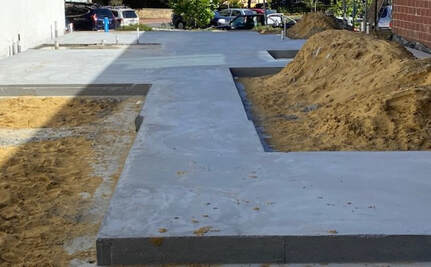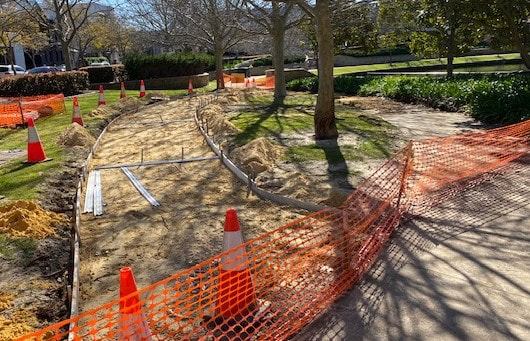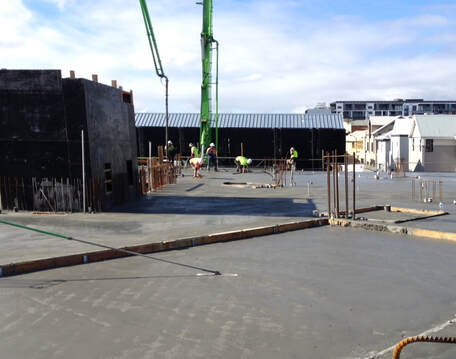|
Concrete is a building material available in various forms and mixes for extensive infrastructure, from extreme weathering to shielding. It is one of the most long-lasting, most economical building materials. When appropriately used in the appropriate application, concrete should last for many years. Understanding Concrete - Why Builders Need to Know More Even though this material is long-lasting, it can still be susceptible to weathering and cracks. So why does concrete crack? This instance is mainly because of the application, but let's dive right into this topic. #homeimprovement #concrete #homeimprovementtips Types of Cracks in Concrete Here's an overview of crack types so that you would know what to do about them.
Reasons for concrete crackingExcess Water in the Mix Concrete does not require too much water for it to accomplish maximum strength. However, most of the concrete used in residential work contains too much water on the job site. Water helps make the concrete easier to install. This excess water also significantly reduces the strength of the concrete. Workability and the impact of water on strength. And just like how concrete does not necessarily need too much water, you can also consider installing floor access doors H20 loading whenever you need water tightness and easy access to any basement construction projects. Shrinkage is usually the leading cause of cracking. When the concrete hardens and dries, it will tend to shrink. This instance is the result of the evaporation of excess water from the mixture. The wetter the concrete mix, the greater the shrinkage will occur. Concrete slabs can decrease as much as 1/2 inch per 100 feet. This shrinkage causes forces in the concrete that pull the slab apart. Forces are the causes of cracks. To avoid this, be very sure you have chosen a reputable contractor who will ensure there's an adequate amount of mixture. It is more expensive to do it right, but it simply takes more workforce to run stiffer mixes. Plastic Shrinkage This instance usually occurs when there is a rapid loss of water from the surface of freshly poured concrete before the concrete is fully set. This situation can cause the top of the concrete slab to dry more quickly than the bottom and can pull apart. To avoid this scenario, the surface of the concrete must be moist. You can do this by covering it with burlap, polyethylene sheeting, or plastic. This process is essential in extreme weather conditions such as high wind, hot temperatures, or direct sunlight. After the concrete setting, be sure to complete this step to ensure the coverings do not disturb or leave unwanted impressions on the new concrete. Furthermore, misting the concrete with water a few times a day will help reduce the evaporation rate from the surface. It is critical to continue this process for at least the first three days of curing. Settlement Settlement cracks happen when the ground under the concrete moves. This issue can result from poorly compacted soil, the wrong soil, water erosion, or tree roots. If your soil is poorly compacted, dig it out and replace it with crushed stone before placing the concrete. If the situation has water drains across the sidewalk, backfill first with several inches of gravel. Also, avoid planting trees next to a concrete sidewalk to prevent roots from growing underneath and cracking the concrete. Drying Shrinkage Concrete mixtures must have water for proper placement and workability. As excess moisture evaporates from the concrete slab during the curing process, there is a reduction in volume or shrinkage that can occur. Compiled stresses can develop within the concrete slab when supporting soils, granular fill, adjoining structures, or reinforcement within the concrete block the shrinkage. As a result, these stresses can act against the weakest points of the concrete material, which will result in cracking. To help control random cracking caused by shrinkage, you should place control joints on concrete slabs. These control joints create a weak point in the concrete and help guide cracks, ensuring they happen straight versus jagged for better overall aesthetics. Preventing cracking in concreteNow that you have read the usual causes of concrete cracks, here are some ways you can follow to avoid these conditions and maintain the material's longevity. Proper Curing of the Concrete While concrete takes 28 days to cure completely, the steps you take in the first few days after the pour are the most significant for ensuring a robust and crack-free surface. The cement cures slowly and needs to maintain moisture to reach its maximum strength. Typically, concrete is less likely to crack if the moisture evaporates gradually; therefore, your project will have more power if you can spray it with water a couple of times each day, preferably for the first week after you've poured the mixture. If the weather is hotter and drier, the more often you should spray the new concrete. Adding Control Joints Because the soil is constantly in movement underneath, concrete slabs, in due course, will crack. These weak spots are cut into the slab down to a quarter of its depth to anticipate and direct any future cracks. The odds are that any damages will happen in these weakest parts. You can create control joints in two ways:
You can determine the maximum spacing between joints for optimum results by multiplying the planned concrete thickness by 2.5. Mixing The Proper Amount of Water The common mistake DIYers make to concrete is adding too much water to the dry concrete mix for easier mixing, leading to weak concrete and a higher risk of cracking. According to experts, just one additional quart of water can minimize the concrete's strength by up to 40 percent. When adequately mixed, wet concrete should be thoroughly saturated but not watery. Concrete that flows around in the mixer or wheelbarrow is too wet, and concrete that's crumbly and falls apart is too dry. #constructionquality ConclusionTo know the basics of why concrete cracks are essential in construction projects to be aware of what not to do in those conditions. By following the proper technique, it can help maintain the project's longevity, and at the same time, you won't have to worry about touch-ups and repair costs in no time. #homeconstruction #homerenovations #homerenotips Other Useful Articles: Control the site mix to improve the quality of concrete Reinforcing Steel what you should know Concrete 101: Should You Attempt a DIY or Call a Pro? AuthorChris Jackson is an experienced Business Development Manager with a demonstrated history of working in the construction industry. He is currently employed by Best Access Doors, an access door supplier in the US and Canada, and has been working for the company for more than 12 years now. His area of expertise is on Negotiation, Roofers, Sales, Project Estimation, and Facility Management (FM) Want to learn more about designing, renovating and building houses?Paul Netscher has written 2 easy to read books 'An Introduction to Building and Renovating Houses - Volumes 1 and 2'. An Introduction to Building and Renovating Houses Volume 1 deals with Hiring Contractors, Managing Construction and Finishing Your Home. and Designing your ideal home Volume 2 deals with Finding Your Ideal Property and Designing Your Dream Home.
("Great for those that DIY. Very helpful in home renovations!" said a Reader on Amazon.com 5*****) These books are available from Amazon and other online bookstores in paper and ebook.
0 Comments
Leave a Reply. |
AuthorI’m a construction professional, author of several successful construction management books, and a home owner. I’ve made mistakes in construction management, I’ve seen others make mistakes, but importantly I’ve had multiple successful construction projects and I’ve learned from the mistakes. I want to share these lessons and my knowledge with you. Also available from:
Amazon Au, Amazon DE, Amazon ES, Amazon CA, Amazon IT, Amazon FR, Amazon NL, Amazon India and 'An Introduction to Building Houses - Volume 2 Finding Your Ideal Property and Designing Your Dream Home'
Archives
July 2024
CategoriesWe welcome genuine comments, especially comments that add additional information to the subject matter in the article. We however reserve the right to remove inappropriate comments, which includes comments that have nothing to do with the subject, comments that include inappropriate language, and comments that are an advertisement for a product or company, or which include an advertising link. Comments must be in English. We will not enter into discussion on why a particular comment was removed.
|








 RSS Feed
RSS Feed


